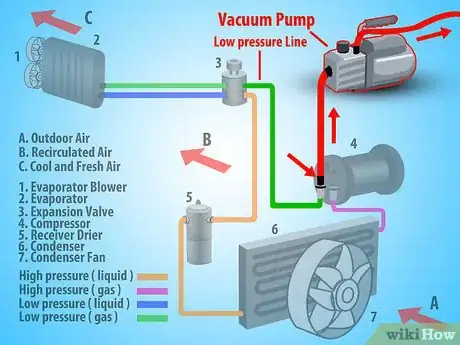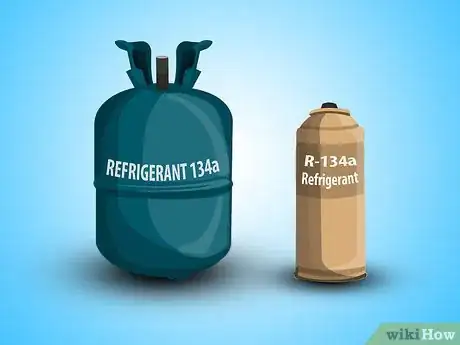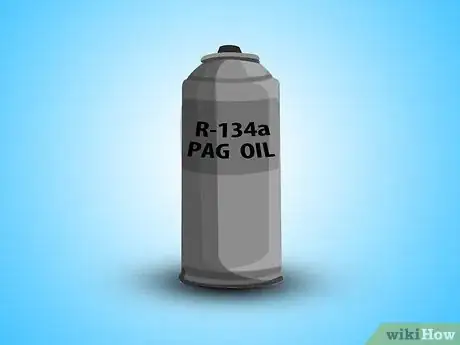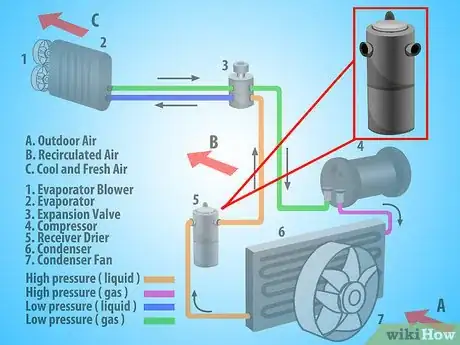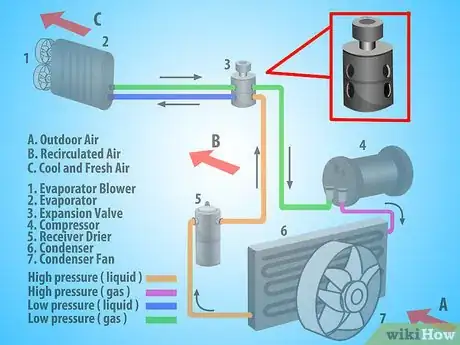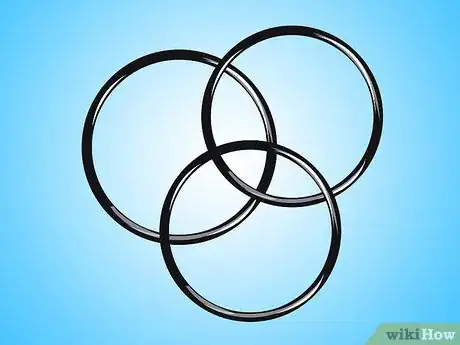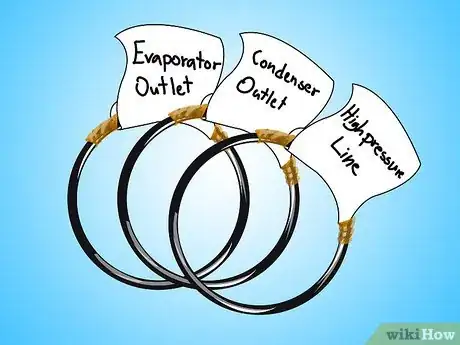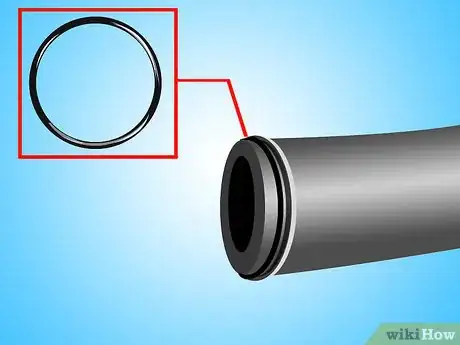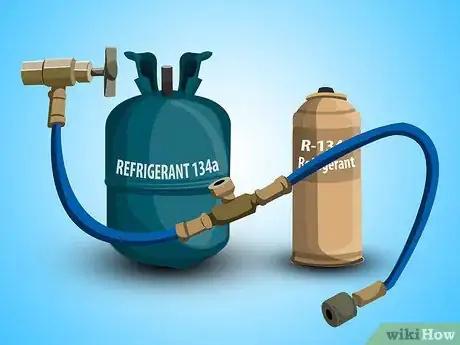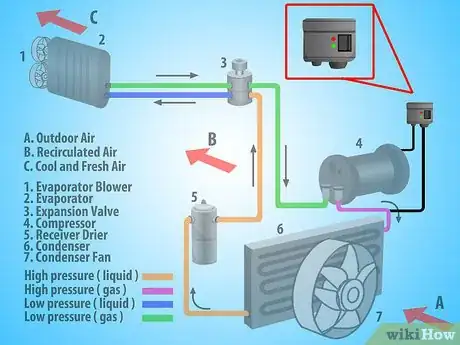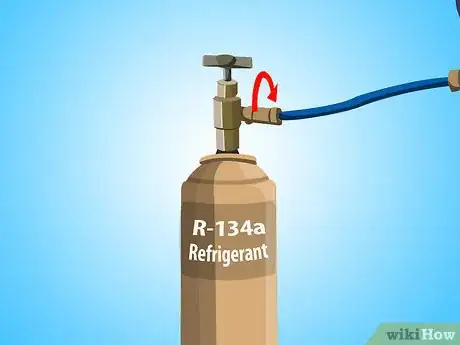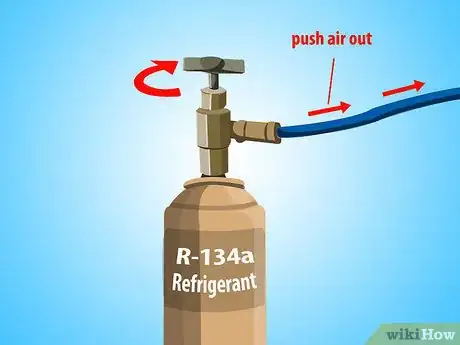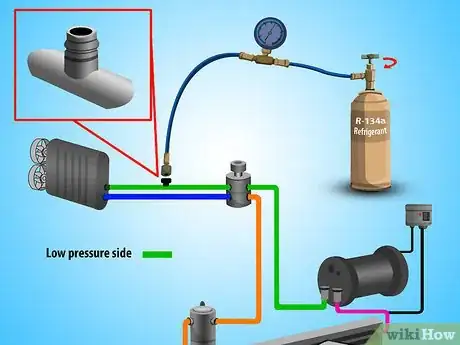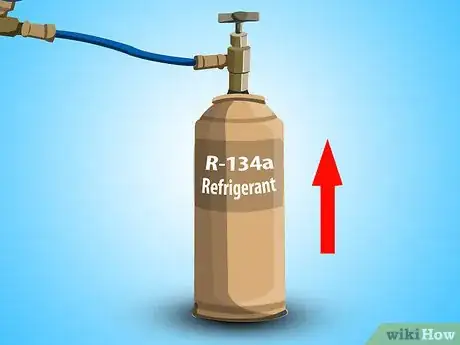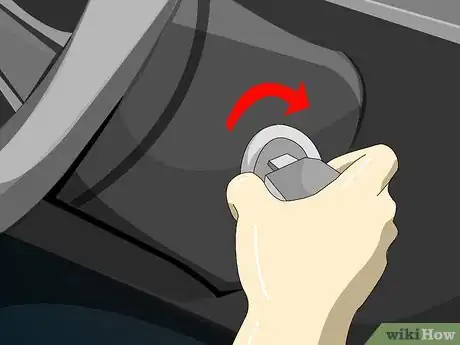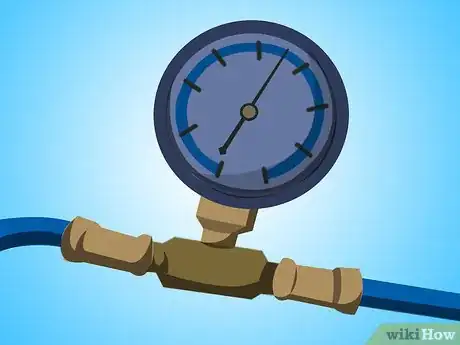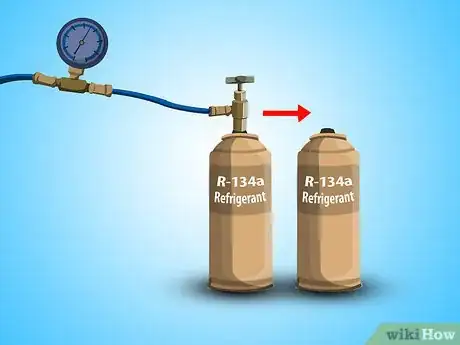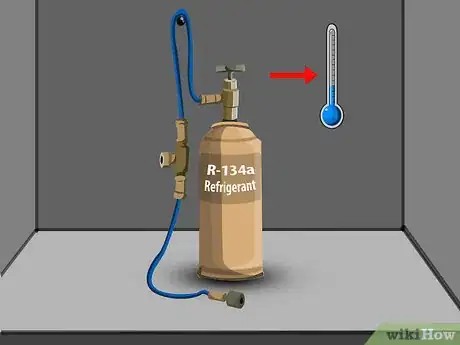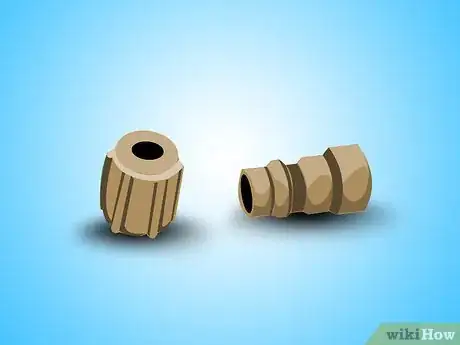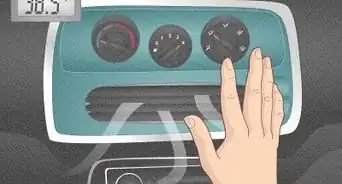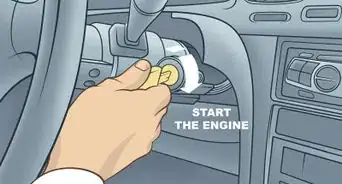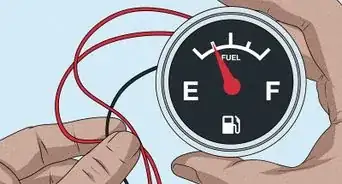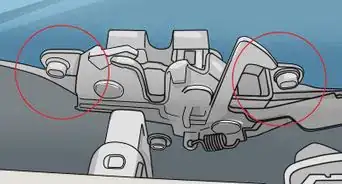X
wikiHow is a “wiki,” similar to Wikipedia, which means that many of our articles are co-written by multiple authors. To create this article, 21 people, some anonymous, worked to edit and improve it over time.
This article has been viewed 184,261 times.
Learn more...
If you've need to make a major repair to your car air conditioner such as installing a new evaporator, compressor or condenser, then you can easily update to new refrigerant at the same time. Follow these steps to retrofit air conditioning in cars to new refrigerant, such as R-134a.
Steps
Part 1
Part 1 of 3:
Prep Your System for the New Refrigerant
-
1Make sure that all of the old refrigerant has been vacuumed out of your air conditioning system. It's best to have a mechanic do this both for maximum safety and to ensure safe refrigerant disposal. Your mechanic will know the required EPA procedures for removing and getting rid of old refrigerant.
- Have the mechanic remove any remaining mineral oil from the system. Make sure that the mechanic flushes the system with a solvent that's compatible with R-134a.
- The mineral oil that is put back into your system should match the old oil. If you had PAG oil, then the mechanic should use PAG oil again.[1]
-
2Install an accumulator or receiver-drier that contains desiccant. The desiccant helps to remove moisture that may accumulate in your A/C system.
- If your A/C system uses an accumulator, you'll find it at the evaporator outlet.
- You'll find the receiver-drier in systems that use an expansion valve to control refrigerant flow. It's connected to the high-pressure liquid line, between the condenser and the expansion valve.
- Make sure that your desiccant is compatible with R-134a refrigerant.
Advertisement -
3Replace the O-rings, which are usually found at every connection. Do this even if you don't think that you need to replace them so that you don't have to do it later if they don't seal.
- When you remove an old O-ring, tape it to a piece of paper. Write down exactly where that O-ring came from and keep the papers for a while.
- If you have a leak at a connection, grab the O-ring that you took replaced. Double-check to make sure that you replaced the old O-ring with a new O-ring that was the right size. Most A/C leaks are caused by O-rings that aren't properly installed.
-
4Double-check your hoses. The hoses that you used with the R-12 refrigerant should work as long as they aren't cracked or damaged. If they are damaged, replace them.
-
5Install a high-pressure cutout switch if you don't have one or replace your old one. When your system pressure gets too high, the cutout switch will shut off the compressor to keep from damaging your A/C parts and to prevent the system from venting refrigerant.
-
6Check the orifice tube. You'll find this tube connected to the high-pressure side at or near the evaporator. In some cases, you may find it in the condenser outlet. Don't try to clean an orifice tube. You'll need to replace it instead.
-
7Add the appropriate PAG oil if your mechanic did not. Make sure to use the viscosity recommended in your car's operating manual.[2]
Advertisement
Part 2
Part 2 of 3:
Add the New Refrigerant
-
1Connect the recharge valve and service hose to your refrigerant can.
-
2Turn the valve on the service hose. Doing this will puncture the top of the can.
-
3Twist the valve back out slowly to release a little bit of refrigerant into the hose. The refrigerant will push air out of the hose so that it doesn't get into your air conditioning system.
-
4Close the valve to keep more refrigerant from escaping. Connect the other end of the service hose to the low service fitting on the air conditioner.
-
5Hold your refrigerant can upright so that the A/C doesn't suck liquid into the system. You only want vapor to be pulled into your A/C.
-
6Attach a high pressure gauge to the high service port. The gauge will help you to make sure that your recharge is accurate.
-
7Start your car engine. Turn the air conditioner on its maximum setting.
-
8Open the valve on your refrigerant and let the A/C extract vapor from the can. The extraction may take up to 10 minutes. The air blowing from your car vents should grow gradually colder.
-
9Watch your high pressure gauge. When the gauge reads 225 to 250 PSI, close the valve on your refrigerant can. Always close the valve before disconnecting the can so that you don't spray refrigerant into the atmosphere.
- Generally, your A/C will take in about 12 ounces (355 ml) of refrigerant.
- If your system isn't fully charged after your refrigerant can is depleted, then you can add another can of refrigerant until your gauge reads in the right PSI range.[3]
Advertisement
Part 3
Part 3 of 3:
Finish the Job
-
1Store your refrigerant can with the service hose attached. Refrigerant doesn't go bad, so you can use what remains in the can another time. Just make sure to store it in a cool place so that the can doesn't overheat and explode. You can also look into selling refrigerant back to a reclaiming facility or to a certified technician.
-
2Install R-134a fittings on the upper and lower service ports. Doing this will prevent cross-contamination of refrigerant, and it is required by federal law.
Advertisement
Community Q&A
-
QuestionHow do I know what cars need to be retrofitted?
 Community AnswerOld-style AC ports will have a small port that is threaded compared to a quick-coupler system. Most vehicles switched to r134a in mid-1994.
Community AnswerOld-style AC ports will have a small port that is threaded compared to a quick-coupler system. Most vehicles switched to r134a in mid-1994. -
QuestionIs there a sight glass on modern receiver/dryers?
 Community AnswerSome have them but others don't. It depends on your vehicle and its make and year.
Community AnswerSome have them but others don't. It depends on your vehicle and its make and year. -
QuestionCan you put r134 in a system that had r12? If not, what do I have to do?
 EddiePCommunity AnswerNo. You cannot add r134(a) refrigerant to an existing system that still contains r12. You can replace the r12 with r134(a) following these steps: 1. A licensed air conditioning technician must discharge and capture the remaining r12 refrigerant. (It is illegal to discharge refrigerant directly to the atmosphere). 2. The system must be flushed to ensure all r12 is removed. 3. A retrofit adapter will need to be installed on the Low and High pressure line fill points. The r12 fill points are threaded fittings and the r134(a) fill points are "push type" fittings. (New condenser and seals may also be needed). 4. Add a new r134(a).
EddiePCommunity AnswerNo. You cannot add r134(a) refrigerant to an existing system that still contains r12. You can replace the r12 with r134(a) following these steps: 1. A licensed air conditioning technician must discharge and capture the remaining r12 refrigerant. (It is illegal to discharge refrigerant directly to the atmosphere). 2. The system must be flushed to ensure all r12 is removed. 3. A retrofit adapter will need to be installed on the Low and High pressure line fill points. The r12 fill points are threaded fittings and the r134(a) fill points are "push type" fittings. (New condenser and seals may also be needed). 4. Add a new r134(a).
Advertisement
Warnings
- Be careful to keep your hands and your tools away from moving parts and hot parts of your engine.⧼thumbs_response⧽
- Wear gloves and protective eyewear while working with your air conditioning system. If refrigerant comes into contact with your bare skin, it could cause frostbite.⧼thumbs_response⧽
- Replacing the mineral oil in your A/C system on your own could void your auto warranty. Make sure you know what the consequences will be before you do the work without the help of a mechanic.⧼thumbs_response⧽
Advertisement
Things You'll Need
- Accumulator or receiver-drier with O-rings
- High pressure cutout switch with orifice tube (if required)
- PAG oil
- R-134a refrigerant
- Recharge valve
- Service hose
- High-pressure gauge
- R-134a service fittings for upper and lower service ports
References
About This Article
Advertisement
